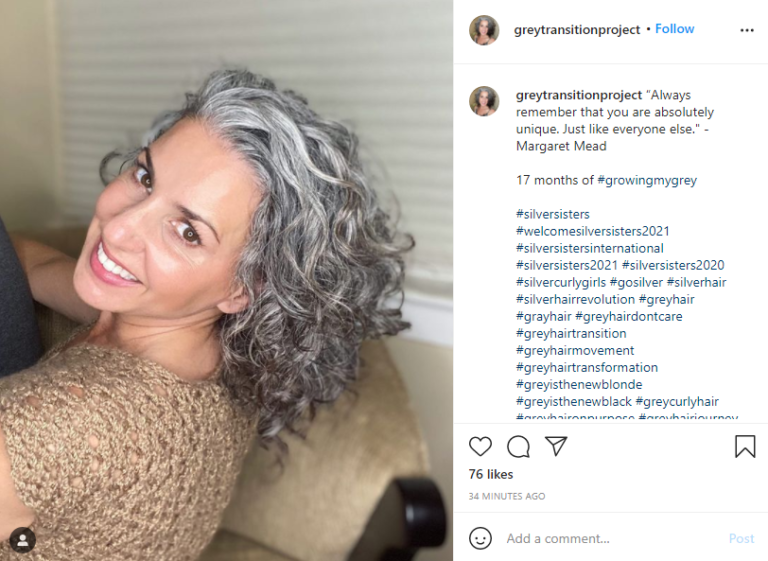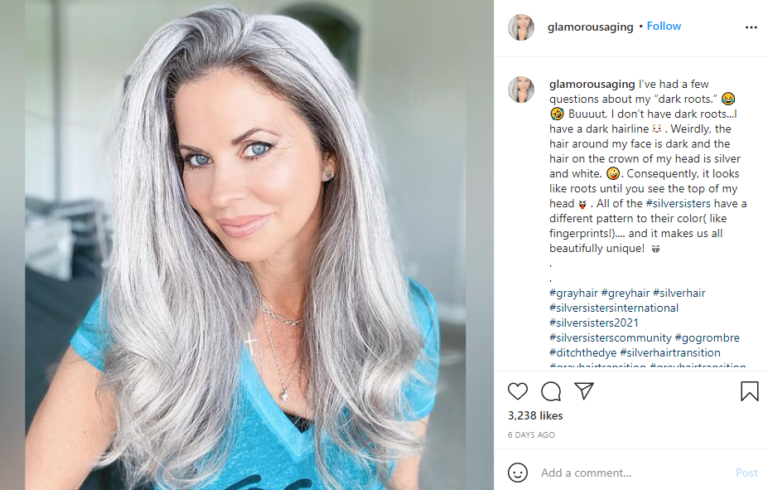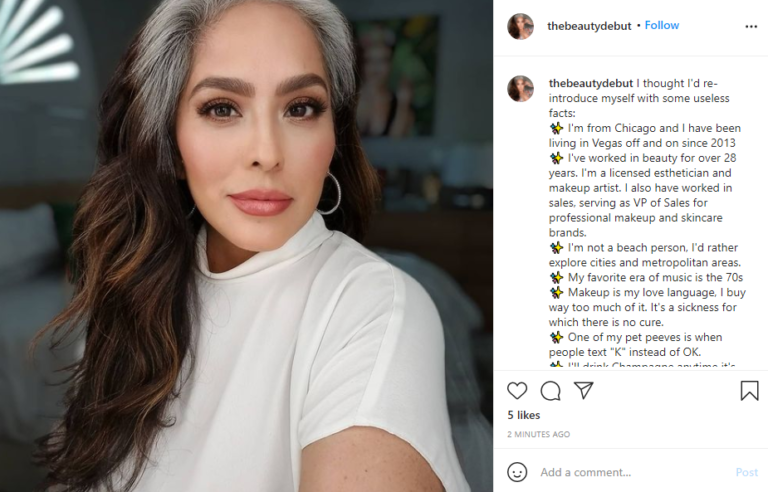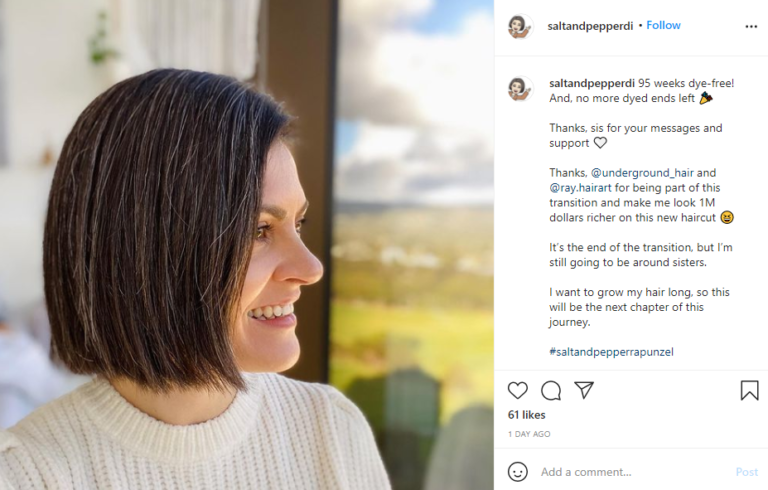Meet Tamara, the grey hair advocate

Where it all started
Tamara's first grey hairs appeared in high school, something that even her friends noticed as they walked together from the bus stop each afternoon. After some time, she realized early greying must be hereditary, as her father experienced the same thing when he was young.

The battle with cancer
Several decades and four kids later, Tamara was diagnosed with cancer. Once the battle was over, however, her hair came back even more grey. So much so that people mistook her for being the grandmother of her children.

Hair dying: a process
Tamara began seriously dying her hair, but results ended up less than ideal. She used non organic permanent hair dye, but she stopped using it after noticing a metallic taste in her mouth. Next, she tried semi-permanent organic dye, but unusual colors such as purple and yellow appeared in her hair after just a few washes. On top of that, the salon visits were getting frequent and pricy.

The turning point
The breaking point came during the pandemic when Tamara was shopping at Lowe’s, when a guy came up and complemented her on her purple hair. After this experience - along with family encouragement and the quarantine - helped Tamara decide to go natural.
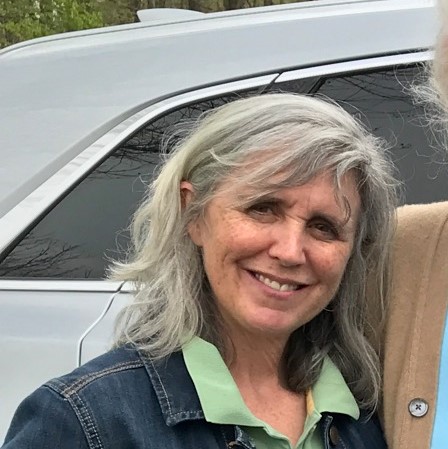
Where she's come
Now, a year later, Tamara is completely grey. While she was initially concerned with looking old from the grey, she now loves the low maintenance, low cost, and silvery look. “Why did I spend so much time, effort, and resources trying to not look grey? I’m so much happier being transparent with who I am and not solely focused on my outward appearance,” she said.
The follow video project is a private interview with Tamara. She discusses journey to strengthening self-confidence and defying cultural approval. The footage is taken during her latest salon session that took away the last of the hair dye.
How hair dye became cultural:
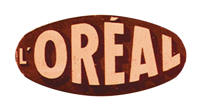
The company we now know as L’Oreal was founded as the French Harmless Hair Dye Company. The starlets and risqué women used it, but it wasn’t appropriate for the general or “respectable” public to use. Some salons had hidden entrances for customers who wanted to keep their hair dying habit a secret.
Photo credit: logosmarcas.net
Timeline information credit: elle.com
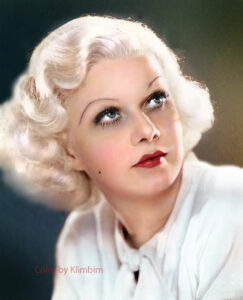
Hair dye was originally used to just change one’s hair color (despite its numerous health-endangering risks). In the 1930’s, the famous actress Jean Harlow regularly bleached her hair with Clorox to remain known as the “platinum blonde.”
Photo credit: flickr.com

Clairol used hair dye ad campaigns to reduce aging appearances. This ad from 1943 described gray hair as a “HEARTLESS DICTATOR,” putting aging on par with other evils that society was facing during the time.
Photo credit: elle.com
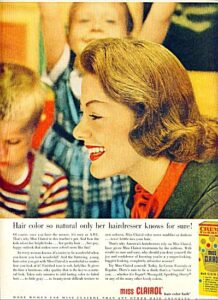 Society experienced significant change when Clairol introduced Miss Clairol, the first home color kit allowing consumers to bleach and dye their hair in one step. It was a revolutionary way to use permanent hair dye and decreased the risk of messing anything up.
Society experienced significant change when Clairol introduced Miss Clairol, the first home color kit allowing consumers to bleach and dye their hair in one step. It was a revolutionary way to use permanent hair dye and decreased the risk of messing anything up.
Photo credit: pinimg.com
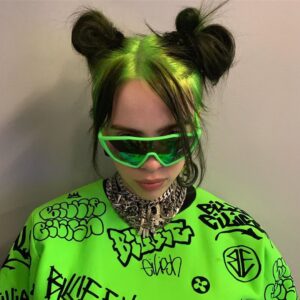 Since then, hair dying rates have escalated. Now, the trend is cultural, commonplace, and almost expected. According to holleewoodhair.com from 2019, 85% of women color their hair at least once every two months.
Since then, hair dying rates have escalated. Now, the trend is cultural, commonplace, and almost expected. According to holleewoodhair.com from 2019, 85% of women color their hair at least once every two months.
Photo credit: vietnamhumanhairs.com
Statistics on hair dye:

Hair advice:
Here are so tips and advice for greying hair or other hair issues from the hair stylist that Tamara regularly visits.
Tips:
Natural platinum, or grey hair, “is more coarse and wiry and dry”
“The reason why customers as we get older stop washing their so often is because as we’re younger our sebaceous glands produce more, and as you age they stop producing so much. So if we’re not really sweating and doing the producing of the sebaceous glands, then…we’re dry.” And “We’re shampooing out all the oils of our hair…so the non-shampooing of the hair as often is okay. That’s great for you, but you’re going to need to condition as well because it is lacking of oil.”
Trick:
Massaging your scalp all over your head help hair follicles to want to produce oils that keep your hair from getting really dry and brittle.
Tip:
“You swep off a hundred hairs a day. If you don’t wash your hair, you’re gonna swept off two hundred hairs.”
Trick:
Moisturizing cream can help. “if your hair gets super dry, you’re not letting it suck something back in so it can continue to grow a better shaft.”
Tip:
“[When] you get some handfuls of hair, don’t be scared. It’s not that it’s falling out, it’s just that you…need to manipulate your scalp.”
Trick:
“Massage your head so that those nerve endings will produce what you need for the hair follicle… if you’re not massaging it enough, you’re not helping its hair follicles.”
Trick:
Use the conditioner products of the shampoo you use to help prevent dryness. Additionally, messaging the scalp and using less heat on the hair is beneficial for hair health.
Instagram pages demonstrating the power of grey hair during quarantine. The following instagram images are from: #silversisters and #youngandgrey
You decide! Does grey hair make people old?
It's time to put our opinions to the test. Does grey hair make people look old? Take the survey below!

